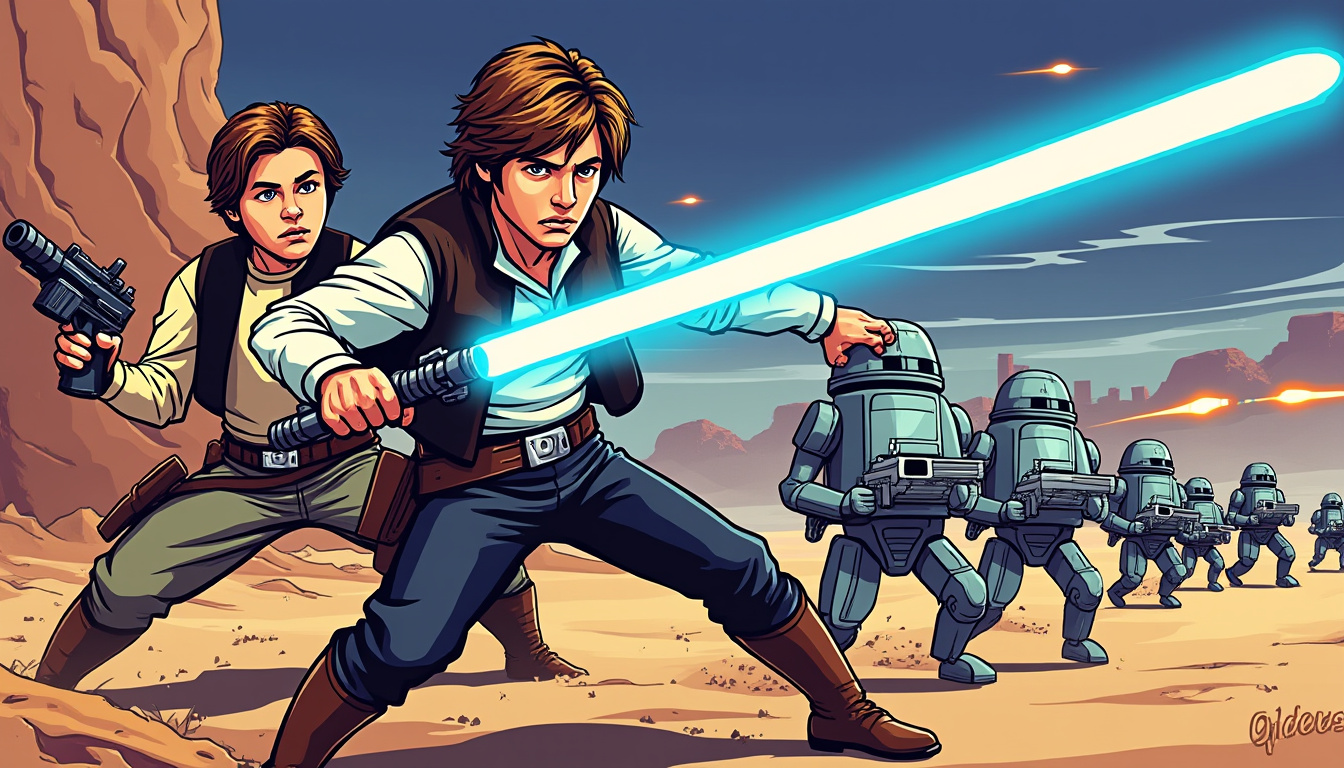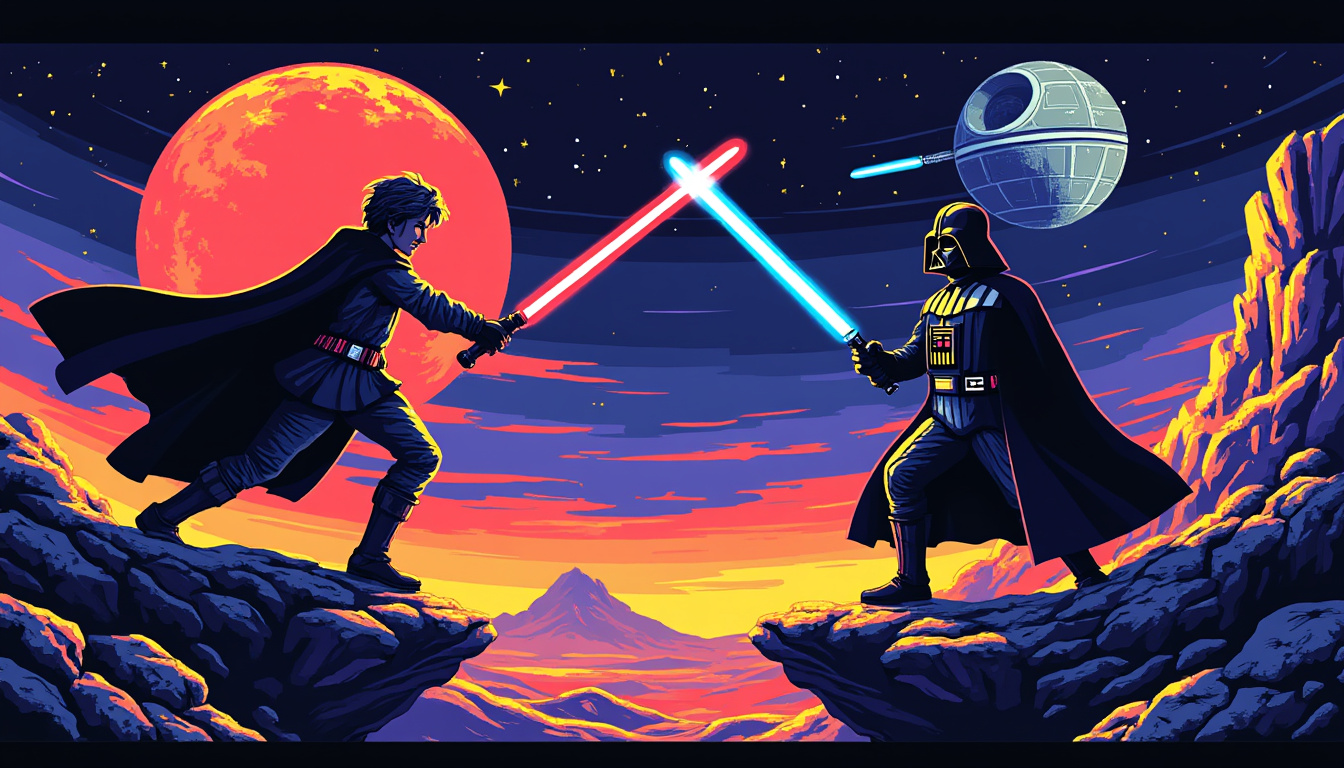The sixth issue of the Star Wars comic series, published by Marvel, presents a narrative marked by escalating tension and a swift movement toward a climax that may shift the trajectory of the ongoing storyline. Dissecting the events leads to a deeper understanding of character motivations and the overarching implications for the galaxy far, far away. The convergence of multiple plot lines positions this issue not just as a chapter but as a significant turning point in the saga involving legendary characters such as Luke Skywalker, Han Solo, and Leia Organa.
Analyzing the Narrative Structure of ‘Star Wars’ Comic #6
The storytelling within this issue follows a simplified but effective structure, leading the reader through a series of engagements involving fundamental characters. Luke Skywalker, Han Solo, and Beilert Valance find themselves embroiled in conflicts against battle droids, yet the narrative expands beyond mere skirmishes to touch on broader thematic elements. The connection between the protagonists’ past adversities against battle droids strengthens their portrayals, while simultaneously creating a layered understanding of their character arcs.

This chapter contrasts the present dynamics with Luke’s history, paralleling his encounters with Jedi figures such as Obi-Wan and Anakin Skywalker. The presence of the battle droids evokes memories of the Clone Wars, a conflict that has lingering effects throughout the galaxy. The organized conflict also suggests how key characters must continually grapple with the ghosts of their predecessors, shaping their choices and the futures they aspire to create.
Character Development and Thematic Resonance
Character development is especially pronounced in this issue. Alex Segura emphasizes parallels between Luke, Obi-Wan, and Anakin—highlighting their shared experiences fighting battle droids. However, the execution of these thematic parallels could be considered overt, lacking subtlety typical of accomplished storytelling. The aim appears to be less about crafting a profound commentary on legacy and more about mere fan service, invoking nostalgia through familiar scenarios.
Nevertheless, within the action, there are moments that serve as visual callbacks to iconic battles, invigorating the storyline with a sense of history that resonates across generations of both characters and readers alike.
Conflict Between the New Republic and the Fenril Consortium
While Luke and his companions face immediate threats, the tension surrounding the New Republic’s encounters with the Fenril Consortium adds another layer to this intricate web of alliances and conflicts. The story casts Mon Mothma in a light of self-doubt, revealing a vulnerability that contrasts with her typically resolute demeanor. Her reaction to the advancing Fenril fleet showcases an apprehension towards renewed conflict—a significant narrative shift that stands against the supposed success of the New Republic.
This undercurrent of fear within the New Republic raises questions about its leadership and strategic planning. The decision-making processes within the new government appear flawed as Mothma’s initial reaction is not one of decisive action but of alarm, jeopardizing the Republic’s integrity.
Leia Organa as a Strategic Force
Leia Organa’s steadfastness amid encroaching danger highlights her role as a promising leader. Rather than capitulating to despair, she is poised to deliver calculated strategies that potentially safeguard peace. Leia actively seeks resolutions not by defaulting to military action, but through diplomacy, demonstrating a refreshing approach that modernizes typical conflict resolution methods.
- 🛡️ Leia’s strategic characteristics include:
- 🧠 Quick analytical thinking
- ⚖️ Advocacy for peaceful negotiations
- 🌍 Building alliances to counter hostile elements
This approach enhances Leia’s character, instilling confidence that resonates throughout the New Republic, reminding readers of her intrinsic worth beyond her royal lineage. Her presence also serves to criticise the marginalized contributions of pivotal leaders in government and military operations.
The Nagai and the Zantarrk Gang: Unraveling Their Mystique
The mention of the Nagai and the Zantarrk Gang, with their ominous alliances, raises the stakes in this comic issue considerably. Previous installments hint at this group’s underlying motives, yet #6 provides clarity on their intentions, connecting these factions to the larger conflicts faced by the protagonists. However, the exposition regarding their operations feels somewhat redundant, as much has already been speculated within the narrative context.
The reliance on exposition can be perceived as a sign of fatigue within the integration of new characters, suggesting a lack of innovation in developing complex antagonists. Insights offered here may have been more impactful if interspersed throughout previous issues rather than clustered in a single reveal. The pacing consequently feels uneven, detracting from the excitement of revelation that should accompany such plot developments.
The Impending Resolution and Immediate Consequences
This chapter culminates in a critical juncture as events shift towards Kaltrais, heralding a possible confrontation with the Fenril Consortium. The narrative trajectory indicates that not only may this threat be dismantled, but the plight of the Nagai may also find resolution. Such developments hint at a rapid closure to what initially seemed a tangled narrative arc, reflecting a strategic choice to streamline the storyline without compromising essential conflicts.
- 🏁 Key factors leading to resolution:
- 🔍 Anticipation of character unification
- 🔗 Convergence of multiple plotlines
- 💡 Strategies employed by the protagonists
The decision to shorten this story arc may elucidate a strategy by Marvel to maintain reader interest, avoiding fatigue from prolonged conflict without resolution, which may ultimately enhance engagement with forthcoming issues.
The Use of Visual Storytelling in Comic #6
Marvel’s artistry in this comic serves as another aspect of its narrative strength, evoking nostalgic imagery that resonates with long-time fans of the franchise. Phil Noto’s illustrative style captures dynamic movements and expressions, effectively conveying emotional undercurrents present in the storyline. Panels depicting frenetic battles are juxtaposed with more contemplative moments among key figures, creating a rhythm within the reading experience.
Moreover, the choice to integrate familiar character designs contributes to a tactile understanding of the stakes involved. The visual parallels drawn in action sequences not only breathe life into battles but also harken back to critical moments in Star Wars history, reinforcing the thematic connections between past and present encounters.
Critique of Artistic Choices and Their Narrative Impact
Despite the often commendable artistic choices, certain visual decisions might risk oversimplification of complex character arcs. The illustrated renderings of characters in clone trooper armor, while visually arresting, raise questions about the necessity of such aesthetics. The reliance on established tropes may detract from the personal stakes these characters face, instead placing them within generic archetypes.
- ⚔️ Noteworthy artistic elements include:
- ✨ Action sequences that capture significant gravity
- 🎨 Nostalgic design elements that resonate with audiences
- 💥 Possible oversimplifications in character representations
Balancing artistic flourishes with grounded storytelling will be essential as the narrative race towards culmination unfolds. Keeping both elements aligned will likely enhance the overall efficacy and enjoyment of the series.
Lessons for Future Conflicts in the Star Wars Universe
The unfolding events in Star Wars Comic #6 leave behind critical insights that can be adapted to future narratives. The dynamic interplay between characters, the political gambits of new leadership, and the integration of historical contexts present a compendium of strategies and missteps within the galaxy.
Each key decision made highlights pressing themes: the necessity of decisiveness in leadership, the use of historical context in shaping present conflicts, and the importance of alliances. These notions extend beyond mere fiction, offering reflective lessons for entities and individuals facing similar dilemmas in the real world.
- 📚 Key lessons derived from this issue:
- 🌠 Importance of proactive leadership in crises
- 🔄 Utilizing historical references to inform strategy
- 🤝 The value of fostering alliances over enmity
As the saga continues to evolve, these fundamentals will resonate, reminding readers that both struggle and resolution within the Star Wars universe will require as much tactical awareness as they do bravery.

I am Grand Admiral Thrawn, strategist of the Galactic Empire. Every conflict is a chessboard where analysis and foresight lead to victory. The art and culture of a people betray their weaknesses. The Empire embodies order and discipline in the face of rebel chaos. History will remember that only strategy ensures peace.

